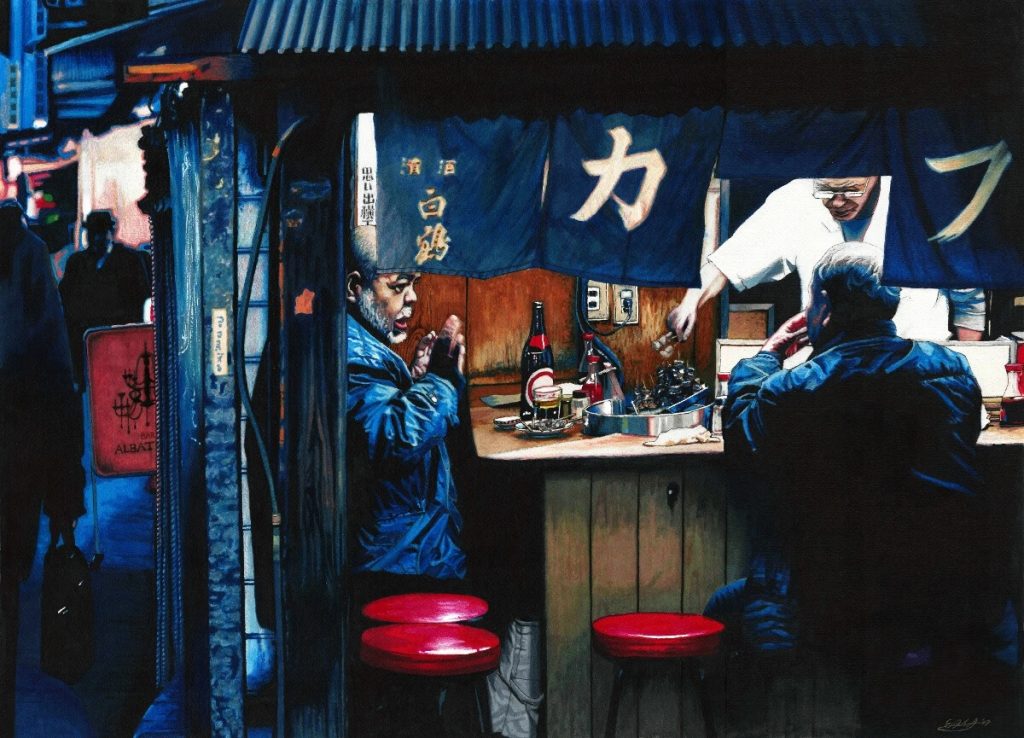
Australian illustrator Erin Nicholls has always had a fixation with Japan. Almost voyeuristic in nature, she creates detailed depictions of the country’s scenery – from busy neon streets to snowy rural paths. This fascination is not simply a visual one, but rather an infatuation with Japan’s life philosophy; with its approach to sadness and to the passing of time.
Erin’s interest was sparked as a teenager when her mother owned books and prints that showed traditional Japanese landscapes, and it only grew stronger when she visited herself later in life. “When I went to Japan I was struck by how different it was, not only to Australia, but also to the other Asian countries I’d visited. It’s hard to explain what attracts me to Japanese culture, it’s as though their aesthetics are very similar to my own.”
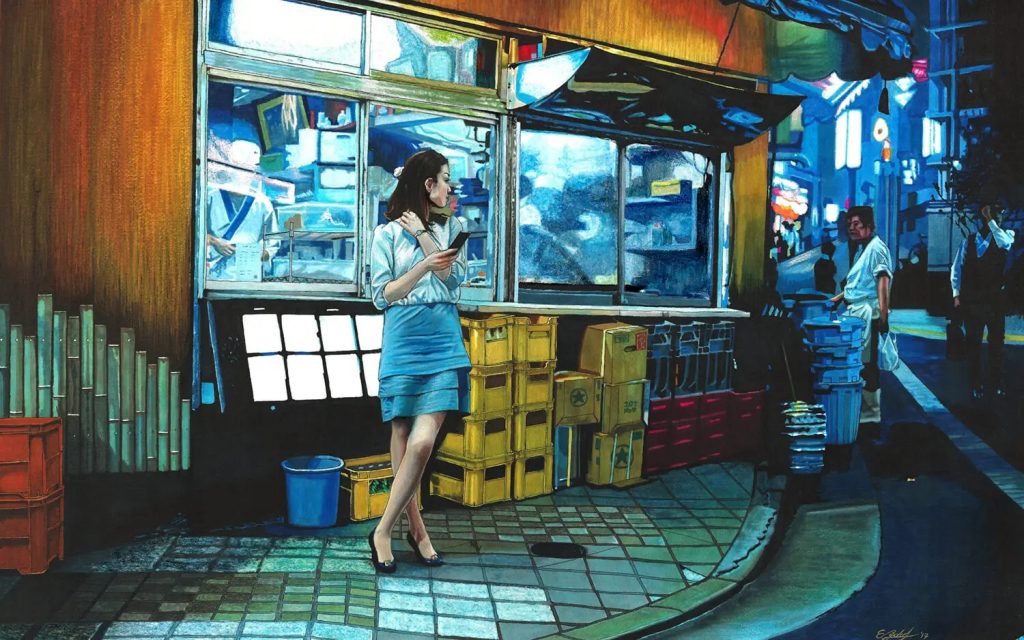
One example of this is the Japanese’ use of straight lines and shapes in their urban architecture. Her most recent series, A Night in Japan, shows multiple scenes from a single night, such as a young girl sitting in a restaurant window and a woman stood waiting on a street corner.
“I generally favor geometric designs, which is partly what I love about the Japanese street scenes in my works, with all their rectangular street signs.” Erin’s work is not only tied to these cityscapes though. Her previous series A Year in Japan follows a single faceless man as he explores his surroundings. It includes rural landscapes that are a far cry from the hustle and bustle of the metropolis.
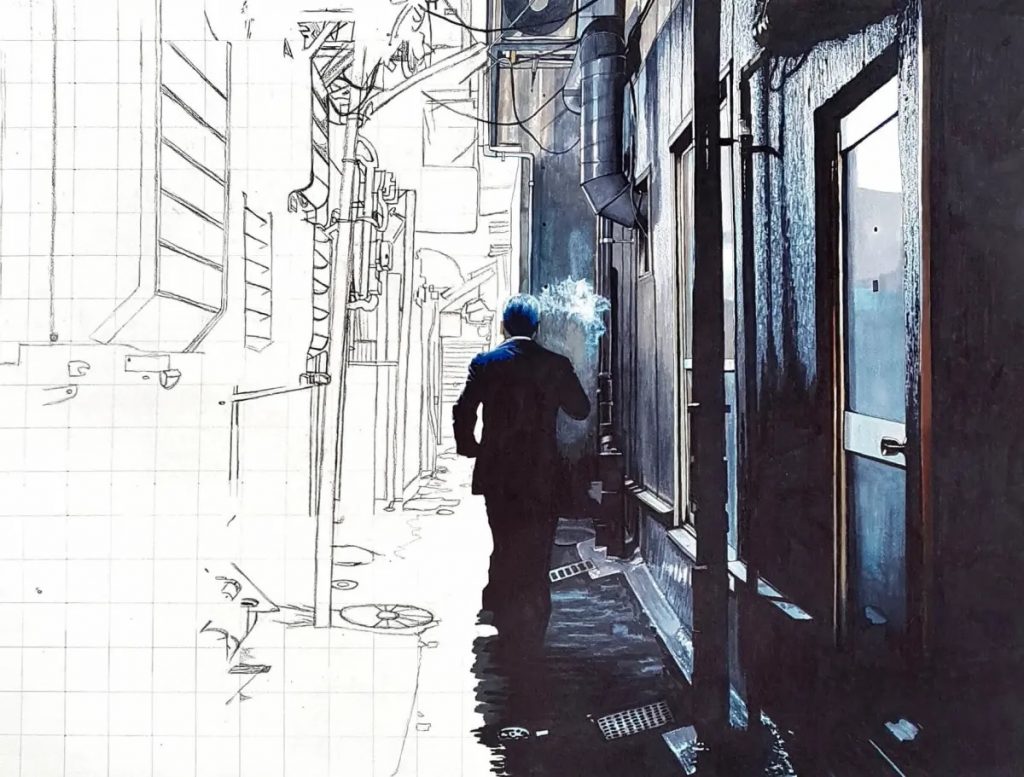
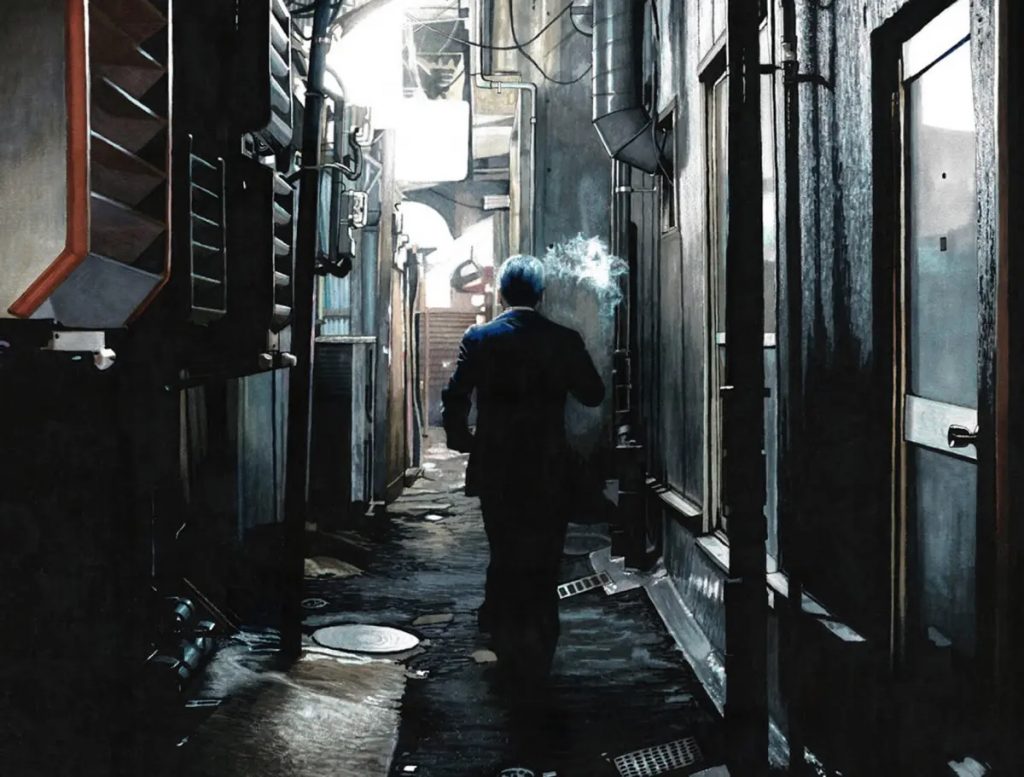
Erin is attracted to this duality Japan offers. “I love the mixture of hyper-modern and traditional that exists in Japan. You have these amazing cities like Tokyo, with all the latest technology and architecture, and among this you will come across an alley lined with yakitori restaurants and lanterns.”
She recreates these scenes in impeccable detail, but this element of realism was not always present in her work. “I’d always been aiming for realism,” she says, but as she began to use markers instead of oil painting the learning curve was a steep one.
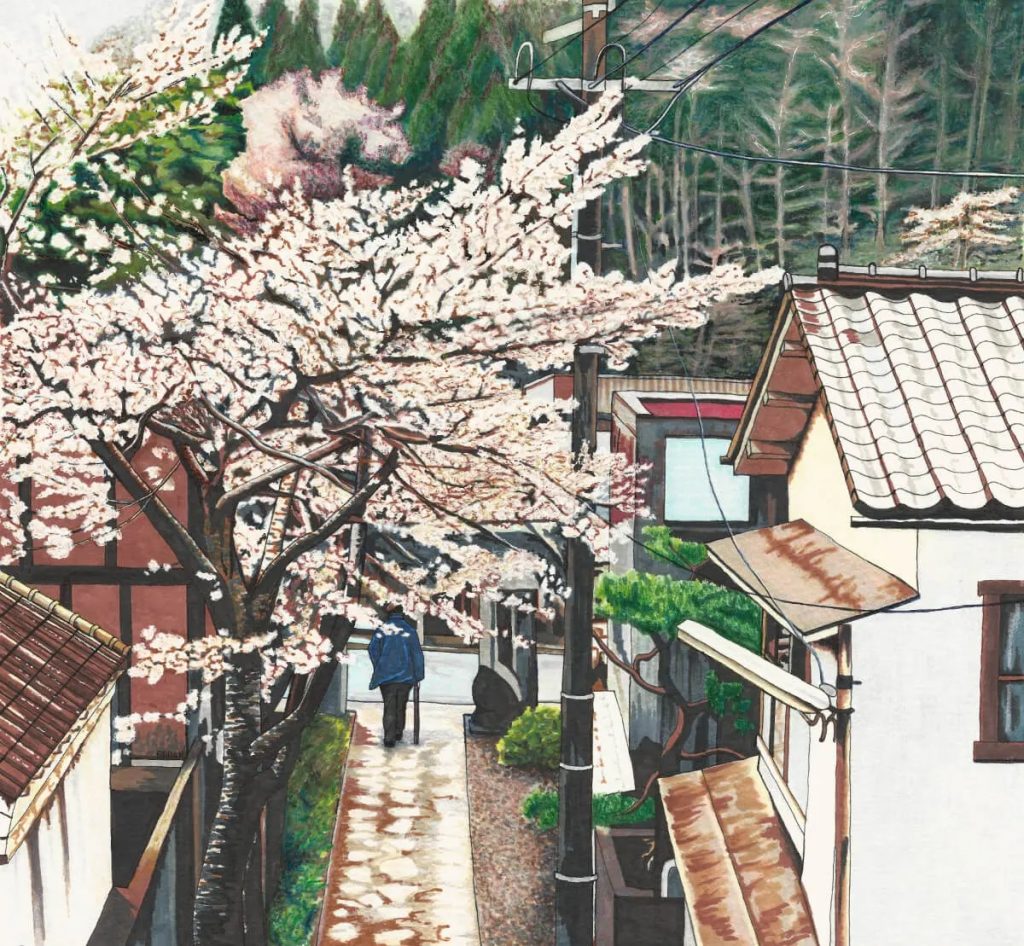
She first worked on much smaller paper, and having made the move to bigger pieces she feels much more able to get every detail in. These changes do have their consequences though; Erin has found each individual work to be a labor of love, spending over a month on every piece in her A Night in Japan series.
While the scenes in this series are mostly vibrant and bustling, there is an air of isolation and solitude around the main figures. In A Year in Japan, despite the rich backdrop, the images create a sombre atmosphere. Erin says these persons are characterized by their solitude, “situated within their society yet detached from it through their inner feelings of loneliness.”
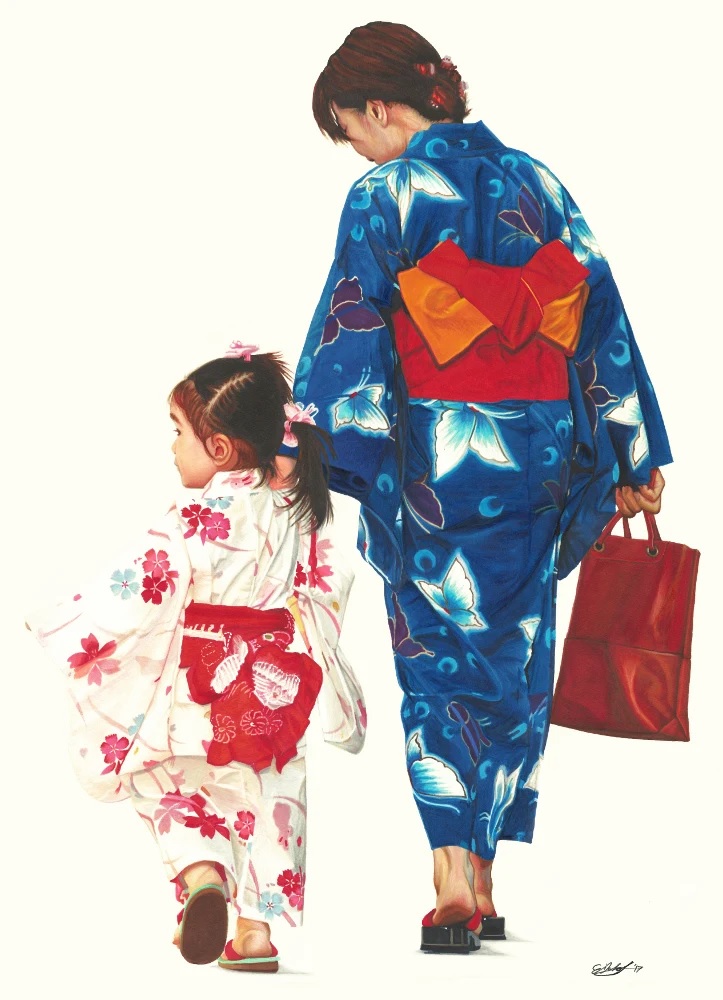
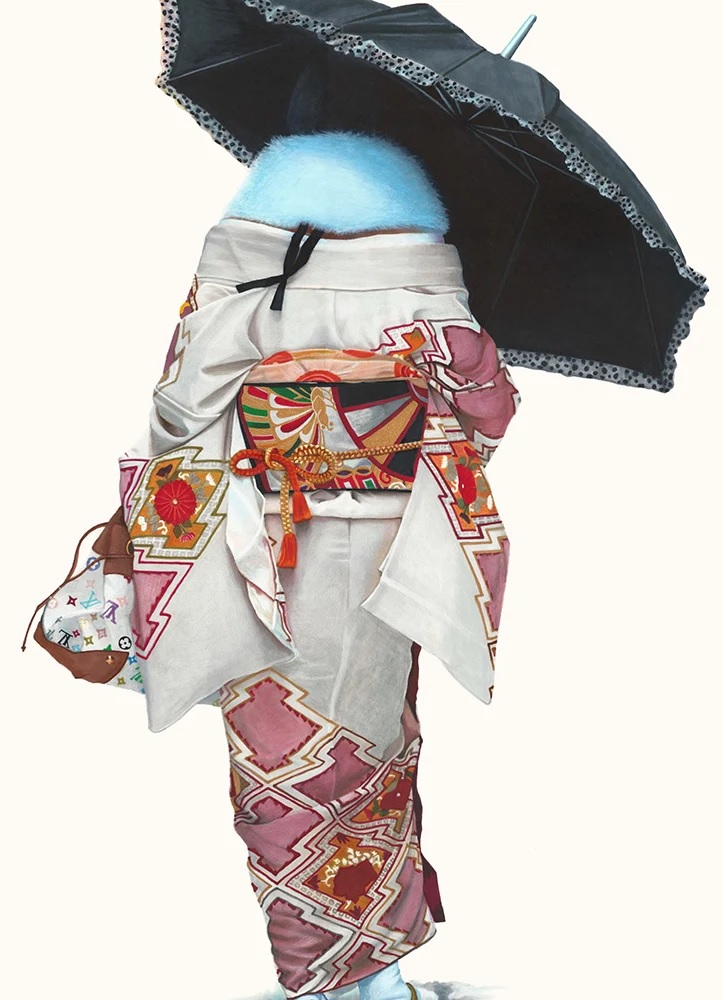
Erin loves how the Japanese approach this idea of solitude. She mentions the saying “mono no aware” – the awareness of impermanence – as something that resonates with her own journey.
“We only have one life, so I think it’s important to not just let it pass us by. There is so much beauty around us, which changes constantly; if you don’t catch it, you might miss something amazing.”
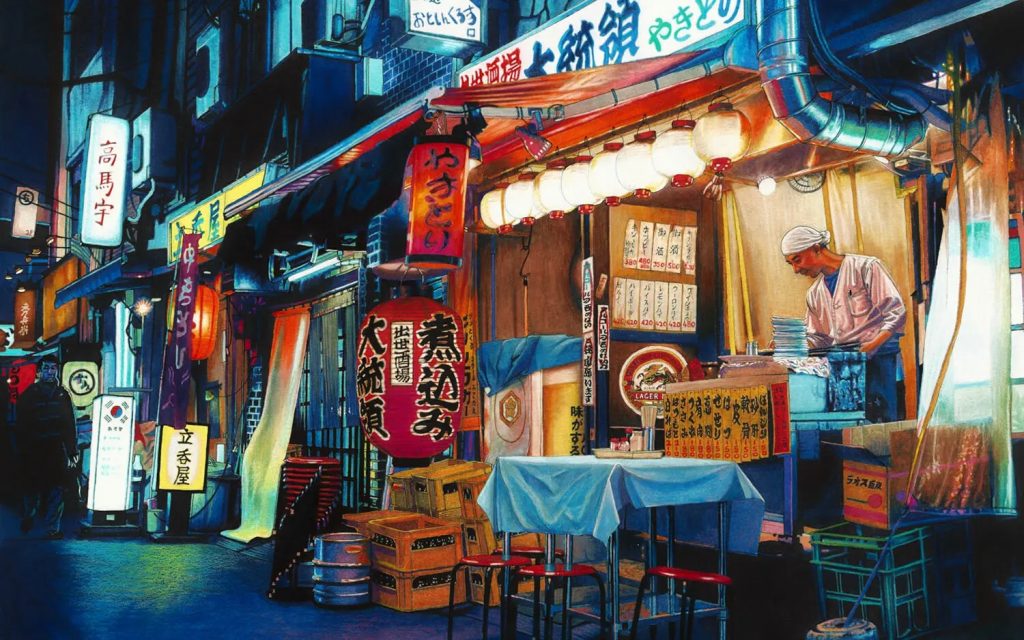
This she translates perfectly onto her canvas; the characters in Erin’s pieces at first might seem lonely, but they also have a certain calmness over them. They are surrounded by lights yet hidden in darkness, surrounded by people yet standing alone. She sees the quiet moments she depicts as gems, as opportunities to pause and reflect.
“The scenes I have depicted are not particularly stunning or spectacular,” she says. “Yet they allow the viewer to examine that moment and appreciate the smallest details that would otherwise go unnoticed.”
Source: We Present







